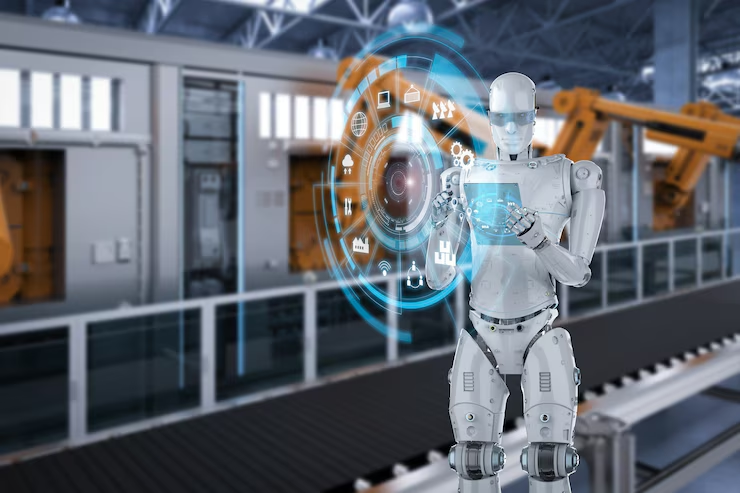In the realm of industrial automation and robotics, where precision, speed, and reliability are paramount, the role of power management emerges as a critical factor in shaping operational efficiency and success.
At the heart of every automated process and robotic application lies the need for a steady and efficient power supply, ensuring seamless operations and optimal performance.
Industrial automation and robotics have revolutionized various sectors, from manufacturing and logistics to healthcare and agriculture, driving productivity, quality, and safety to unprecedented levels.
However, these advancements come with an increased power demand, presenting unique challenges in managing energy consumption, distribution, and utilization effectively.
This article delves into the pivotal role that power management plays in the realm of industrial automation and robotics. By understanding the fundamentals of power management and exploring its application in these fields, we uncover how efficient energy usage can enhance productivity, reliability, and sustainability in industrial settings.
The Significance of Power Management in Industrial Automation
In the realm of industrial automation, where precision, speed, and consistency are paramount, power management emerges as a cornerstone for achieving operational excellence.
Efficient power management not only ensures the smooth functioning of automated processes but also plays a crucial role in driving productivity, minimizing downtime, and optimizing resource utilization.
Energy Efficiency and Cost Savings:
One of the primary benefits of effective power management in industrial automation is the enhancement of energy efficiency.
By employing advanced power management techniques, such as intelligent power distribution, voltage regulation, and load balancing, industries can minimize wastage and optimize energy consumption.
This, in turn, leads to significant cost savings by reducing electricity bills and operational expenses associated with power usage.
Enhancing Operational Reliability:
Industrial automation systems rely heavily on a continuous and stable power supply to maintain seamless operations.
Any disruption or fluctuation in power quality can lead to downtime, production delays, and potential damage to equipment.
Through robust power management strategies, such as backup power systems, surge protection, and voltage stabilization, industries can enhance the reliability of their automation infrastructure, mitigating the risks associated with power-related failures.
Minimizing Downtime:
Downtime in industrial automation can have far-reaching consequences, impacting production schedules, customer deliveries, and overall profitability.
Effective power management plays a crucial role in minimizing downtime by ensuring uninterrupted power supply to critical systems and equipment. By implementing proactive measures, such as predictive maintenance, remote monitoring, and fault detection, industries can identify and address potential power issues before they escalate into costly downtime events.
Impact on Overall Productivity and Performance:
Ultimately, the significance of power management in industrial automation extends beyond mere energy conservation or reliability it directly influences the overall productivity and performance of manufacturing and production processes.
A well-designed power management infrastructure enables industries to optimize resource allocation, streamline operations, and maximize throughput, thereby enhancing competitiveness and driving sustainable growth.
Power Management in Robotics
Robotics, with its diverse applications ranging from manufacturing and logistics to healthcare and exploration, relies heavily on efficient power management to ensure optimal performance and longevity.
Unlike traditional industrial automation systems, robotics often operates in dynamic and unpredictable environments, presenting unique challenges and opportunities for power management solutions.
Unique Power Challenges in Robotics
Robotic systems face distinct power challenges due to their mobility, varied tasks, and reliance on onboard power sources. Some of the key challenges include:
Limited Battery Life and Energy Density:
Many robots operate on battery power, which comes with inherent limitations in terms of capacity and energy density.
Maximizing battery life while maintaining sufficient power to drive various actuators, sensors, and computational components is crucial for prolonged operation and uninterrupted functionality.
Dynamic Power Requirements:
Robots often perform a wide range of tasks with varying power requirements. From precise manipulation tasks that demand low power to high-speed locomotion or heavy lifting activities that require significant power output, managing dynamic power demands efficiently is essential for optimizing performance and extending battery life.
Heat Dissipation and Thermal Management:
Intensive computation and mechanical motion generate heat within robotic systems, which can adversely affect performance and reliability if not managed effectively.
Efficient thermal management strategies are necessary to dissipate heat and maintain operating temperatures within safe limits, preventing thermal throttling and component degradation.
Power Management Strategies for Robotics
To address these challenges and ensure reliable operation, robotics engineers employ a variety of power management strategies, including:
Energy-Efficient Design:
Designing robots with energy efficiency in mind involves optimizing mechanical and electrical components to minimize power consumption without compromising performance.
This may include using lightweight materials, implementing low-power sensors and actuators, and employing efficient motion planning algorithms to reduce energy expenditure during operation.
Adaptive Power Allocation:
Adaptive power allocation techniques dynamically allocate power resources based on real-time task requirements and environmental conditions.
By intelligently distributing power among different subsystems and modules, robots can prioritize critical tasks while conserving energy during periods of low activity.
Regenerative Braking and Energy Recovery:
Regenerative braking systems capture and store energy during deceleration or braking events, converting kinetic energy into electrical energy that can be used to recharge onboard batteries or power auxiliary systems. This not only extends battery life but also reduces energy waste and enhances overall efficiency.
Predictive Maintenance and Fault Detection:
Implementing predictive maintenance algorithms and fault detection mechanisms enables early identification of power-related issues, such as battery degradation or voltage fluctuations. By proactively addressing potential failures, robots can minimize downtime and maintain peak performance levels throughout their operational lifespan.
Conclusion
Effective power management is crucial for the reliability, efficiency, and longevity of robotic systems.
Robotics engineers employ strategies like energy-efficient design and adaptive power allocation to optimize energy usage and extend battery life.
These advancements drive innovation in robotics, enabling more autonomous and sustainable operations. As robotics continues to evolve, efficient power management will play a key role in unlocking its full potential across various industries.












